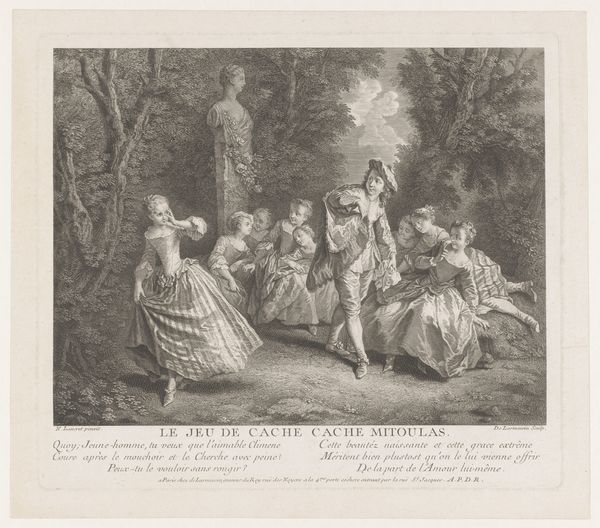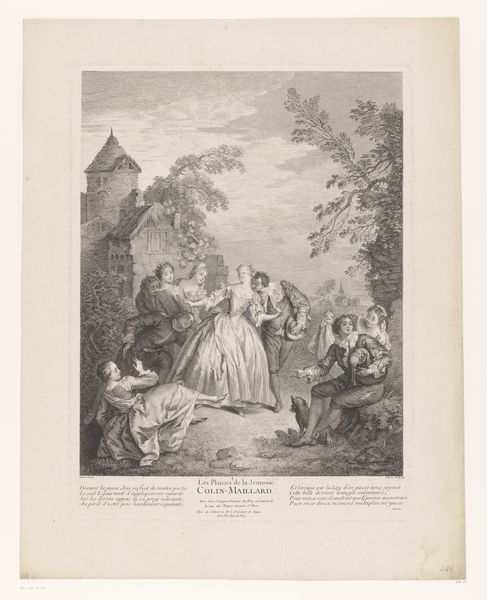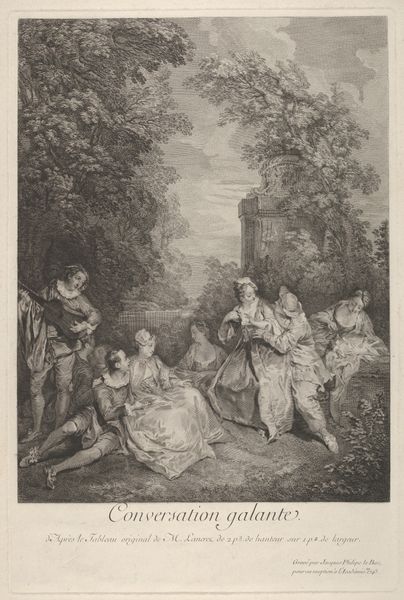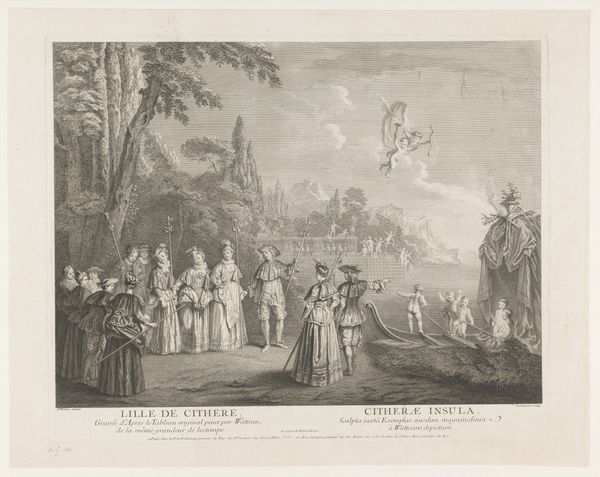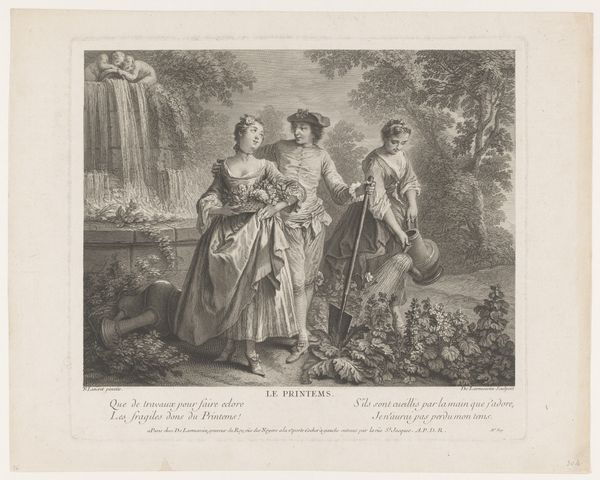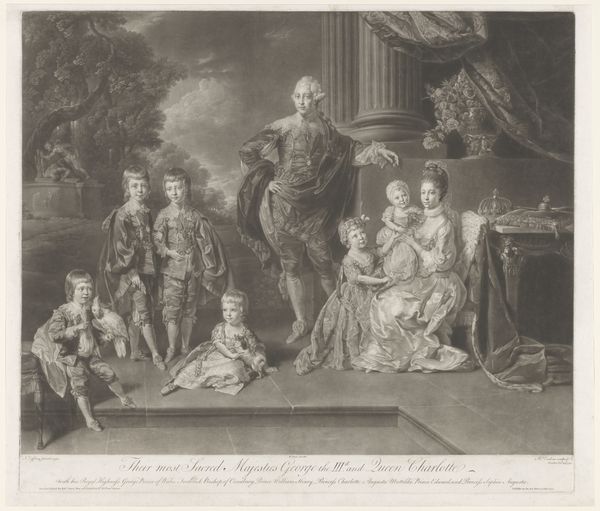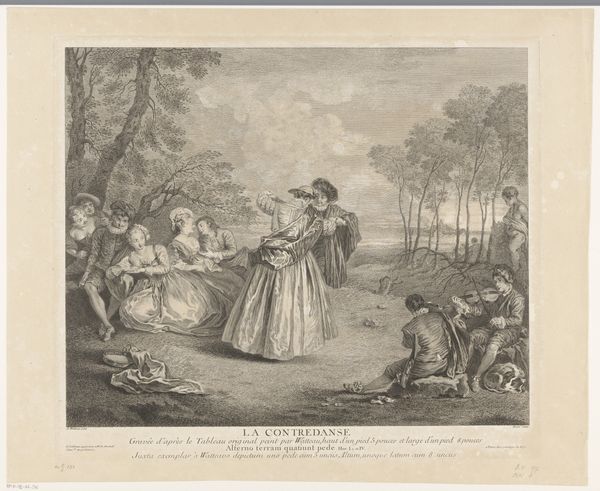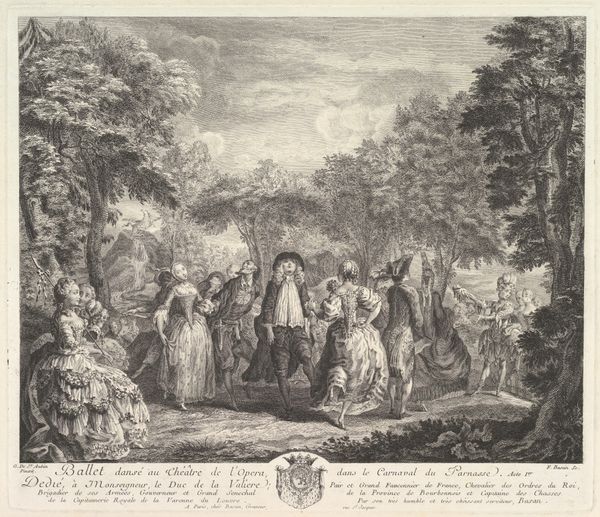
Portret van Marie-Anne Botot Dangeville in een tuin met kinderen 1732
0:00
0:00
jacquesphilippelebas
Rijksmuseum
print, engraving
#
portrait
#
baroque
# print
#
old engraving style
#
landscape
#
genre-painting
#
academic-art
#
engraving
Dimensions: height 457 mm, width 571 mm
Copyright: Rijks Museum: Open Domain
Curator: Here we have an engraving, "Portret van Marie-Anne Botot Dangeville in een tuin met kinderen," from 1732, crafted by Jacques Philippe Le Bas. It's a piece held within the Rijksmuseum collection. The baroque aesthetic and use of light are very strong, what do you think? Editor: There's a whimsical theatricality to this piece, almost as if a scene from a play is frozen in monochrome. It evokes the artificial paradise and constructed pleasures enjoyed only by the elite. Curator: Indeed. Le Bas was primarily an engraver and printmaker, working in a period where print served as both an art form and a crucial tool for disseminating images and ideas. How do you interpret this piece as a document of its time? Editor: Considering Dangeville's profession, her presence signifies more than simple portraiture. The work acknowledges female theatrical agency, although likely curated, while also showcasing the family amidst trappings of privilege dependent upon a stratified labor system and mercantilist enterprise. How conscious do you believe Le Bas and Dangeville were of the role these prints played in shaping public opinion of actresses? Curator: Printmaking in this era served as a mechanism for social mobility for some and for reinforcing hierarchies for others. Disseminating these engraved portraits aided in creating celebrity culture, but more than that, examining the labor, skill, and artistry involved pushes beyond mere surface and ventures into the complexities of production. Note also the paper and ink—both were luxury items subject to trade routes and class status. Editor: Absolutely. It invites reflection on visibility, representation, and the economic conditions that permit someone to be seen and celebrated. The surrounding figures invite conversation around performance, leisure, and spectatorship—but this vision of idyllic repose occludes the reality for most. Curator: And how far does this genre of art succeed, if it even tries, in mirroring an objective point of view on life at that period? The creation itself changes perception; in reality the piece serves as an enduring fabrication, don't you think? Editor: I think any attempt to objectively capture lived experience will fall short. However, engaging with artworks that may not reflect a fully accurate story encourages discourse, critique, and intervention, prompting questions regarding the stories that are elevated against those that remain obscured. Curator: That’s a great point. It encourages new avenues of investigation beyond simply its pure aesthetics. Editor: Exactly. Thanks for pointing out those intricacies with such nuance, this has been truly enlightening.
Comments
No comments
Be the first to comment and join the conversation on the ultimate creative platform.

